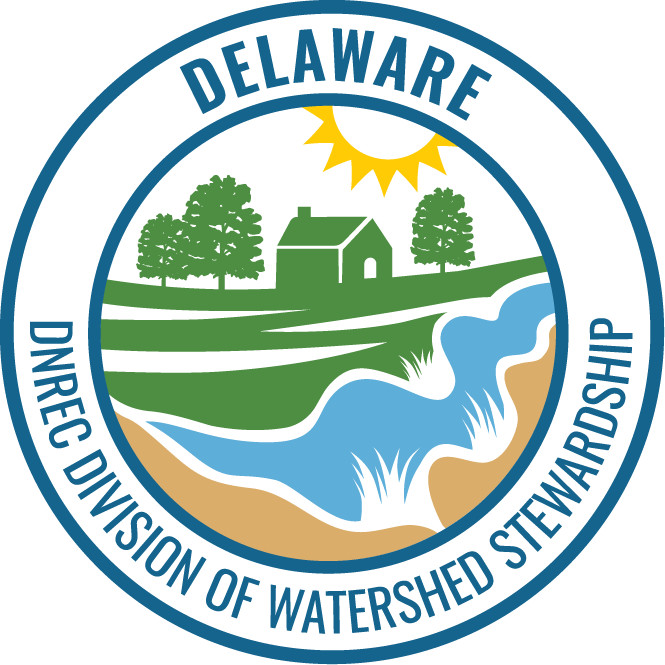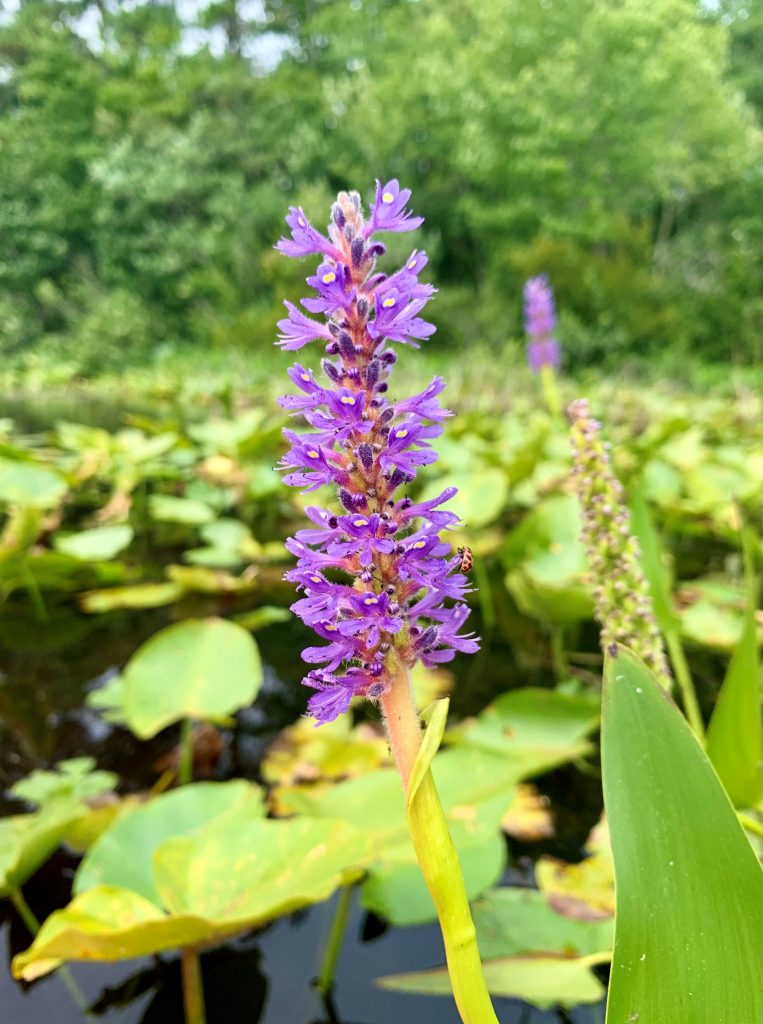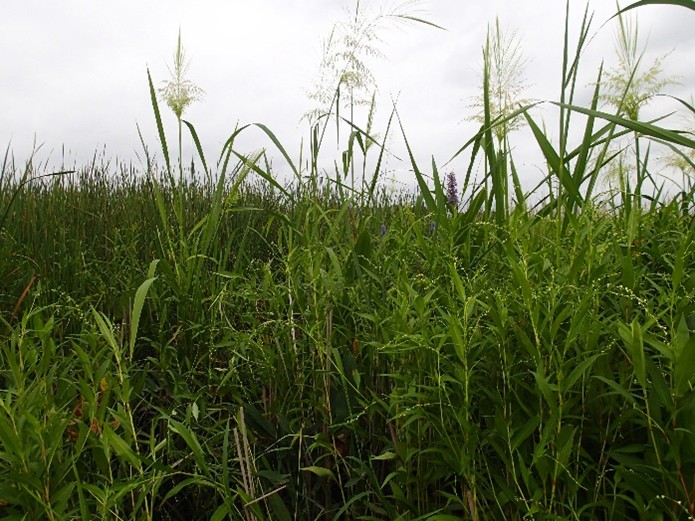
Facebook Twitter Instagram YouTube
Written on: September 24th, 2025 in Natural Resources, Wetland Research
By Alison Rogerson, DNREC’s Wetland Monitoring and Assessment Program
Introducing Tidal Freshwater
Most people are familiar with tidal wetlands that line the Delaware Bay coast and the Inland Bays. Likewise, most of us can recognize a freshwater wetland along a stream or in a forest. But what about tidal freshwater wetlands? That’s not a typo. Tidal freshwater wetlands are a small, lesser known but unique and valuable type of wetland.
Where Are They?
Tidal fresh wetlands are both tidal and freshwater, the best of both worlds. They occur in coastal systems, primarily up rivers where fresh water and saltwater meet. You can find them at the uppermost portion of the estuarine, or salt, zone where the inflow of salt water is diluted by upstream freshwater flowing out. Salinity in these areas range from 0.5-2.0 parts per thousand (ppt). For reference, salinity in coastal wetlands is typically around 15-20 ppt.
How Many Are There?
Wetlands of this type exist from New York to North Carolina. In Delaware, there are an estimated 13,000 acres total as of 2017 which made up about 8% of our statewide wetland total. So they are a small but interesting wetland class. You can find them up every major coastal river such as the Saint Jones, Murderkill, Leipsic, and Smyrna Rivers. Further up the Delaware River, tidal freshwater wetlands become more common along major tributaries such as the Appoquinimink, Blackbird and Christina Rivers.
Why Are They Important or Special?
Tidal freshwater wetlands offer a rich and diverse plant community. Some typical species you’ll find includes wild rice, arrow arum, water hemp, pickerelweed and spatterdock, to name a few. They provide flood and storm protection and are beautiful and scenic to kayak through. Tidal freshwater wetlands also serve as great habitat for wildlife such as muskrats, turtles, wading birds, fish, and wood ducks.


What Threatens Them?
Tidal freshwater wetlands are threatened naturally and by human actions. As sea levels rise and saltwater lines advance higher and higher upstream, water and salinity levels increase to the point where plants can no longer survive. In Delaware, and other states, many freshwater streams were historically dammed to create freshwater lakes, usually for lumber mills. This artificial barrier created a hard stop where tidal waters coming upstream cannot mix with freshwater outflows freely. Over time, tidal fresh wetlands are feeling the ‘pinch’ between rising saltwaters and dam structures.
What Can Be Done?
Human impacts in tidal fresh wetlands should be permitted by state and federal offices, which helps to avoid and minimize permanent degradation. Always check with regulatory offices if you plan to construct or make changes in these areas – good contacts to have are the DNREC Wetlands and Waterways Section and the U.S. Army Corp of Engineers.
Landowners can check our Delaware Wetland Toolbox mapper to see if they are near tidal freshwater wetlands. Small steps can make a big difference over time such as removing invasive species such as Phragmites, purple loosestrife and reed canary grass. Replacing with native wetland plants improves habitat quality. Reducing pollution from lawn fertilizers, herbicides, and excess road salt helps improve wetland health.
On a state level, dam removal is an ongoing and long-term process. Dam removal is complex but offers many benefits for migrating fish species, water quality, reduced flooding as well as for tidal freshwater wetlands. Landowners can become informed and support DNREC and partner non-profit organization efforts to remove dams.